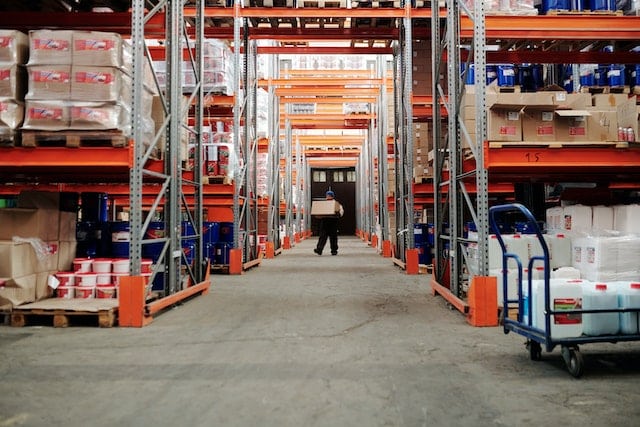How the ‘Retail Renaissance’ is Redefining the In-Store Experience

Steve Jobs, the guy who told us to think different, said this about the importance of customer experience: “You’ve got to start with the customer experience and work back toward the technology – not the other way around.” Walk into any of the Apple stores around the world and you’ll see this philosophy come to life in every facet of the in-store experience.

This is why the successful brick-and-mortar retailer’s response to the impact of the supposed “retail apocalypse” has not been to invest in technology for technology’s sake. Instead, these retailers have doubled down on making the in-store experience as customer-friendly as possible, whether it’s through entertaining them or to make shopping that much more convenient. The fact is, this approach is just smart business. According to a recent study by TimeTrade, while many consumers like to research and discover products online, 85% of shoppers want to go to a physical store when making a final purchase decision.
This is not to say that technology’s role should be somehow diminished. On the contrary, technology plays an integral role in the ability for retailers to keep up with the fickle, near-instant gratification demands that shoppers have been conditioned to because of digitization. As a result, a modern shopping experience should be omnichannel, tech-oriented, and highly efficient. Store owners have to work harder than ever to keep up with these new trends and adapt to shifting expectations.
This is at the heart of the ‘retail renaissance’ and in this blog post, we’ll examine the different ways the in-store experience is evolving through this rebirth.
The Integration of Technology
Today’s consumers are utilizing technology in every aspect of their lives, so it’s no surprise that store owners have turned towards high-tech features as a method to lure new shoppers. Studies have shown, however, that consumers aren’t interested in tech for tech’s sake: they’re only interested if it can have an immediate positive impact on their shopping experience.
According to the 2019 Brick & Mortar Retail Report, a virtual reality (VR) experience that entices shoppers to enter a store simply doesn’t hold the same value as basic cleanliness and organization. If you plan to integrate advanced technology into your retail environment, it should be done so in a way that will help customers shop smarter, save time, and choose better products. Major brands have risen to the challenge – and have done so extremely well.

For example, a new feature recently introduced to Nike’s existing app uses augmented-reality technology to scan your feet with a smartphone camera, mapping each foot’s dimensions using a 13-point measuring system. Sizing predictions are programmed using artificial intelligence (AI), and, as more people use the tool, the more accurate these measurements become.
It is Nike’s hope that this tool will help reduce the number of size-related footwear returns and boost overall customer satisfaction. With an estimated 60 percent of the population currently wearing the wrong shoe size, Nike has certainly set themselves up for success.
As the consumer landscape continues to change, retail store owners are advised to make technological investments wisely. Remember that prioritizing the basics – like keeping your store clean, comfortable, and presentable – is what will ultimately bring customers back. If you wish to integrate technology, first consider how it will contribute positively to the customer experience and let that guide your decision.
Brand Uptime
Brand uptime is the concept of conscientiously maintaining brick-and-mortar stores to project a consistent and positive image. While the increase in online shopping certainly means that enough effort should be put into creating a user-friendly website, physical stores cannot be ignored. And when it comes to cleanliness, atmosphere, and customer experience, expectations have remained largely the same. The way a store’s infrastructure is perceived, whether positively or negatively, has a direct impact on its ability to retain customers and, therefore, its long-term financial success.
One retailer that has mastered brand uptime is Louis Vuitton. Each time a customer steps into a Louis Vuitton store, he or she can expect the same consistent experience – no matter when you arrive or where the store is located. Each LV store is set up to have a similar aesthetic – facilities are sparkling clean, and customer service is consistent with the luxury branding the store conveys. Louis Vuitton invests a significant amount of time and resources into maintaining its facilities and uses analytics to be proactive in their business decisions, saving both time and money.
One of the greatest obstacles to maintaining brand uptime has to do with internal visibility – especially for FM teams responsible for managing multiple brick-and-mortar facilities. Without robust technology and efficient, strategic processes in place, issues will inevitably arise and accelerate the deterioration of stores.
It is for this reason that businesses should consider utilizing technology such as service automation. From a single dashboard, FM teams gain complete visibility into internal operations across all locations. This allows facilities managers to react to problems as soon as they arise, keeping brand uptime in check.
Omnichannel Experiences
Gone are the days when consumers went to brick-and-mortar stores to see products for the very first time. A multitude of touchpoints are involved in the modern shopping journey; from researching products online and downloading offers through a rewards app to trying on items in person and sharing their purchases on social media. This sort of omnichannel experience is the new norm for most major retailers – to get the most out of it, brands must make sure to provide a coherent and unified experience across every channel and platform.
Take this example: Let’s say a female shopper views a product on a website or app and learns that it is currently in stock at a nearby location. The shopper excitedly decides to take a trip to the store with hopes to make a purchase. When she arrives, not only does she find the store to be less aesthetically pleasing than the brightly colored branding on their app, but an associate says the product is out of stock. Thus, the retailer loses a sale and a disappointed customer walks out the door, unlikely to return.
It’s important to make sure each shopping channel works seamlessly with one another, in real-time, in order to provide a successful, gratifying shopping experience. One touchpoint that is not synced with another will only lead to confusion for the customer – and confusion rarely turns into a sale.
Efficiency
With so many turning to online shopping for a quick and easy shopping experience, you certainly don’t want to scare away customers with long lines and crowded dressing rooms. Something like ‘customer flows’, aka how comfortably and efficiently a customer is able to move about a store, is especially important when implementing new infrastructure into stores.
From browsing products to using fitting rooms, and waiting in checkout lines, customer flow can have a huge impact on the mood of your customers and can determine how long or short they want to stay in your store. The last thing you want is for customers to see a long line and decide to leave before making a purchase. Perform an audit of your assets and layouts so you can determine if shifts need to happen in order to optimize your space better.
Final Thoughts
The traditional brick-and-mortar store is here to stay, despite shifting customer expectations. It is highly advisable that store owners stay on top of the latest FM trends such as the integration of technology, creating an omnichannel experience, and focusing on brand uptime, and efficiency, if they wish to stay profitable.
Learn more about how integrating innovative service automation and facilities management technology can help build a better customer experience.




